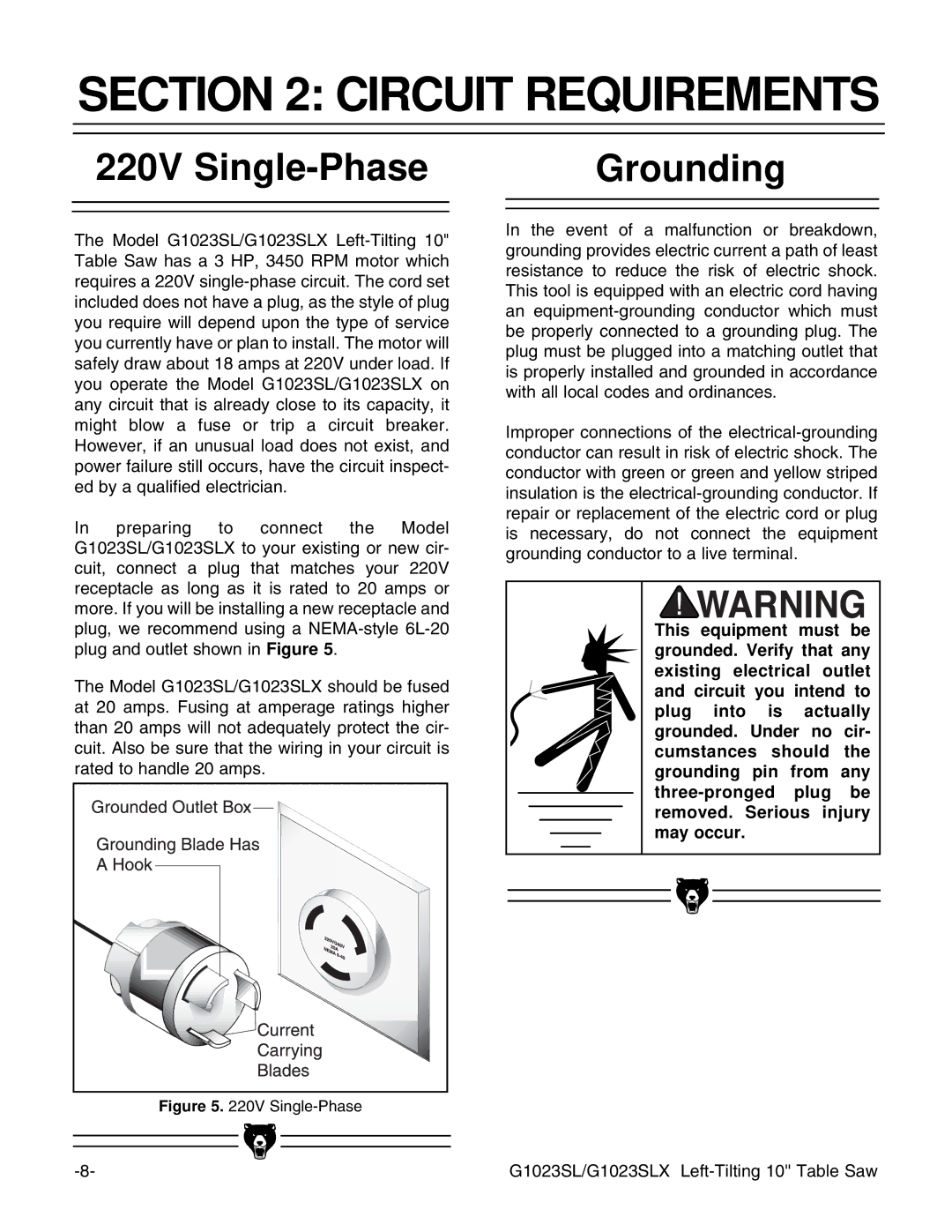SECTION 2: CIRCUIT REQUIREMENTS
220V Single-Phase | | Grounding |
| | |
| | |
| | |
The Model G1023SL/G1023SLX Left-Tilting 10" Table Saw has a 3 HP, 3450 RPM motor which requires a 220V single-phase circuit. The cord set included does not have a plug, as the style of plug you require will depend upon the type of service you currently have or plan to install. The motor will safely draw about 18 amps at 220V under load. If you operate the Model G1023SL/G1023SLX on any circuit that is already close to its capacity, it might blow a fuse or trip a circuit breaker. However, if an unusual load does not exist, and power failure still occurs, have the circuit inspect- ed by a qualified electrician.
In preparing to connect the Model G1023SL/G1023SLX to your existing or new cir- cuit, connect a plug that matches your 220V receptacle as long as it is rated to 20 amps or more. If you will be installing a new receptacle and plug, we recommend using a NEMA-style 6L-20 plug and outlet shown in Figure 5.
The Model G1023SL/G1023SLX should be fused at 20 amps. Fusing at amperage ratings higher than 20 amps will not adequately protect the cir- cuit. Also be sure that the wiring in your circuit is rated to handle 20 amps.
In the event of a malfunction or breakdown, grounding provides electric current a path of least resistance to reduce the risk of electric shock. This tool is equipped with an electric cord having an equipment-grounding conductor which must be properly connected to a grounding plug. The plug must be plugged into a matching outlet that is properly installed and grounded in accordance with all local codes and ordinances.
Improper connections of the electrical-grounding conductor can result in risk of electric shock. The conductor with green or green and yellow striped insulation is the electrical-grounding conductor. If repair or replacement of the electric cord or plug is necessary, do not connect the equipment grounding conductor to a live terminal.
This equipment must be grounded. Verify that any existing electrical outlet and circuit you intend to plug into is actually grounded. Under no cir- cumstances should the grounding pin from any three-pronged plug be removed. Serious injury may occur.
Figure 5. 220V Single-Phase
| | | |
| | | |
-8- | | | G1023SL/G1023SLX Left-Tilting 10'' Table Saw |
| |

